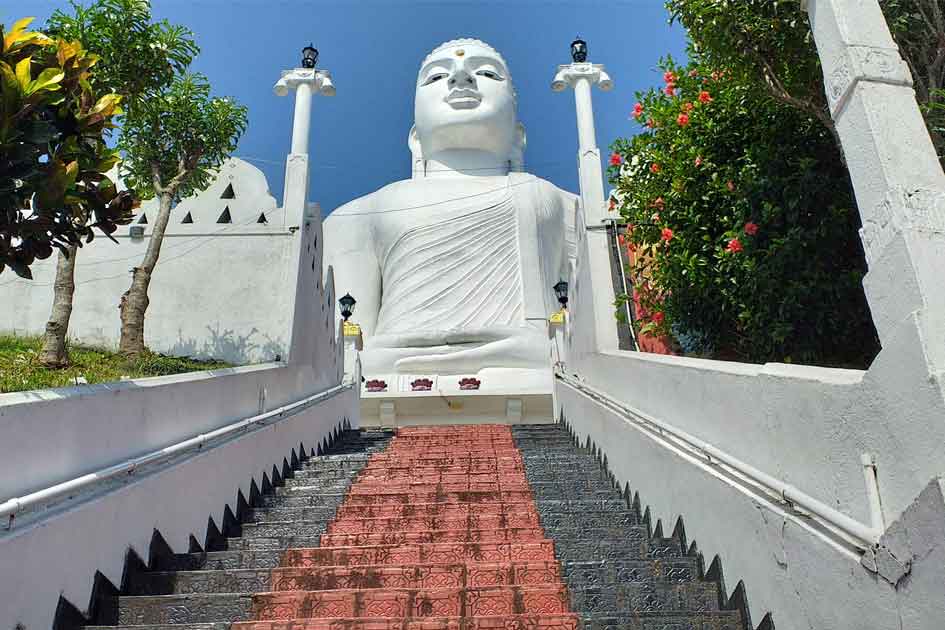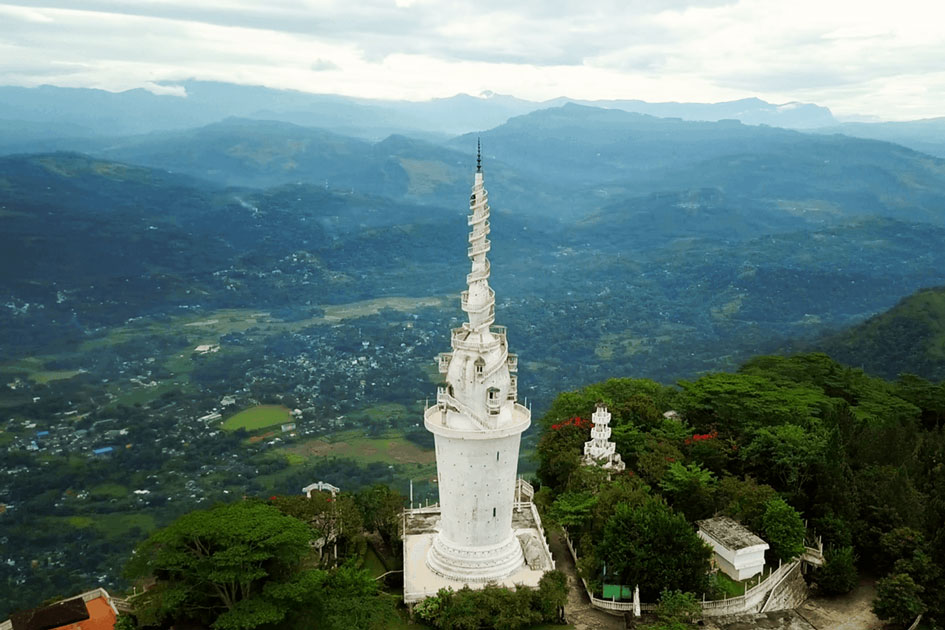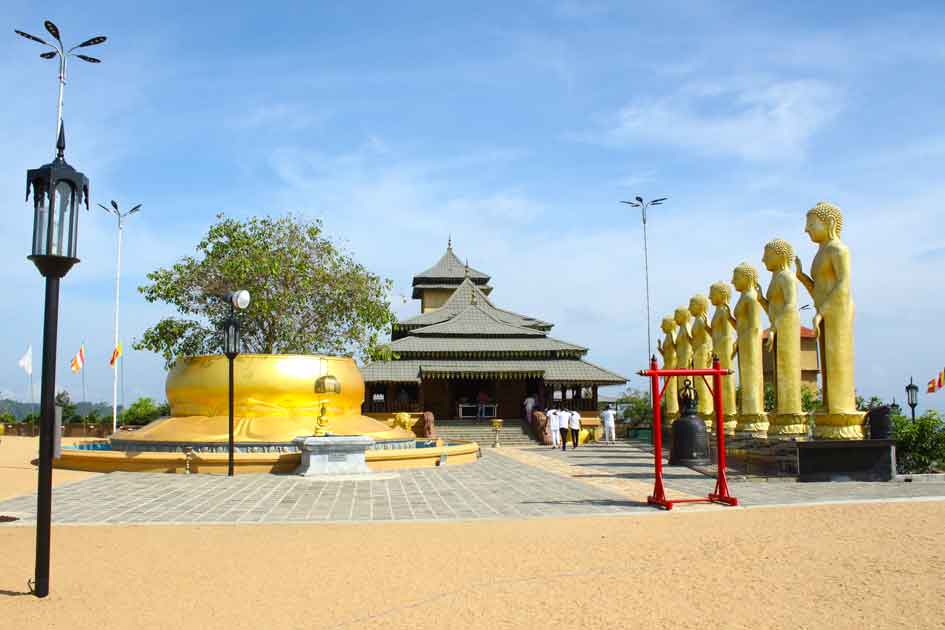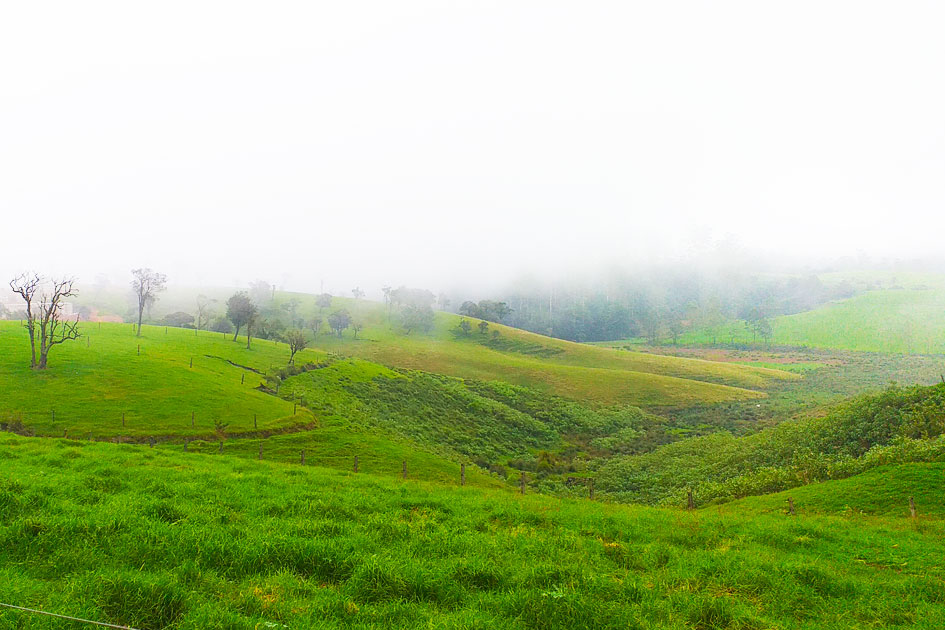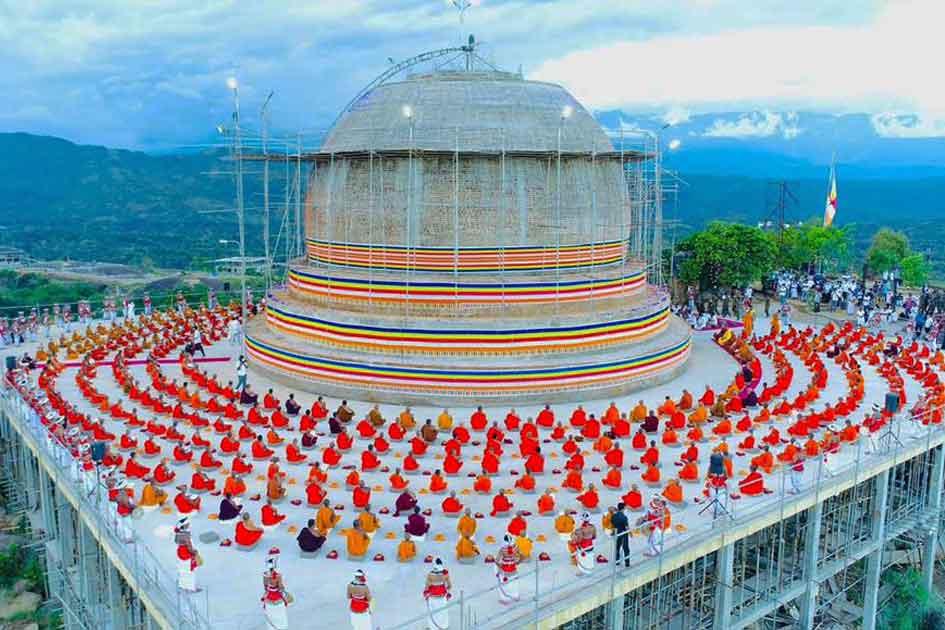Bahirawakanda Vihara Buddha Statue
The Bahirawakanda Buddha statue is housed at the Sri Maha Bodhi Temple, which is located on top of Bahirawakanda Mountain. This exquisitely carved white statue, which depicts the Supreme Buddha seated in Nirvana, may be found all around Kandy before it. With a height of 88 feet, it is Sri Lanka's biggest Buddha statue.
Kandy can be described as a city that has won the respect of local and foreign tourists as well as Buddhists from all over the world. Most visitors to Kandy only visit the Temple of the Tooth, the Kandy Lake Circle, and the Peradeniya Botanic Gardens, but miss other tourist attractions in Kandy. One of the areas they lack is the Bahirawa Kanda Viharaya. The Buddha statue can be seen by any visitor visiting Kandy at the Bahirawa Kanda Temple, which is situated above the capital.
How to get to Bahirawakanda Temple
You may take a bus or train from Colombo to Kandy, but the train is the most picturesque option. Bahirawa Kanda Viharaya is 650 feet high and is situated 2 km from Kandy City.
Bahirawa Kanda is a wonderful place for visitors to see the natural wonders of the region, and from there you can see the Temple of the Tooth in Kandy, as well as the city of Kandy and the surrounding mountain ranges.
Location Map To Bahirawakanda Temple
History of Bahirawakanda Temple
Ven. Ampitiye Dharmarama Thero began work on the temple and the massive Buddha statue in 1973, and it was finished and opened to the public in January 1993.
This mountain is synonymous with many beliefs and folklore, and it is because of these beliefs and folklore that it was given the name Bahirawa Kanda.
Many traditions surround the Bahirawa Kanda hill, which translates to "Gnome Mountain," and how this monument came to be. Two of these stories stand out.
Legend tells how the hill came to be known as 'Gnome Mountain' or 'Devil's Hill.' According to folklore, there was a period when the mountain made weird noises and swallowed the people who lived there in terror. They suspected it was the work of an evil gnome and sought a means to pacify it. Meanwhile, a genuine gnome had infiltrated the palace and assumed the position of one of the ministers, unbeknownst to everybody.
Recognizing an opportunity, the 'minister' informed the monarch that if a beautiful virgin was sacrificed every year, the gnome would be appeased, and so a new superstition was born. But then, one year, the suggested sacrifice was the phony minister's own son's girlfriend.
The villagers grabbed her in the middle of the night, carried her up the hill, and abandoned her there. When the minister's son learned this in the morning, he quickly headed out to save her. He defeated the gnome, his father, who had come for his own sinister goals and returned to the hamlet. When the crafty son swiftly manufactured a gnome sound, the worried and scared people began to worry if the rescue of the sacrifice had enraged the gnome (He was, after all, a gnome, being the offspring of the first gnome.). The locals understood this to imply that the sacrifice was accepted, and the couple departed the hamlet that night rather than risk being detected.
Another legend tells of an old temple dedicated to the primeval god of protection, Bahiravar, that was built during the time of the Nayakkar Kings. During the ancient times in India, the conventional means of devotion for this god frequently included animal sacrifice, however, human sacrifice was never used. However, for some reason, this ritual appears to have become distorted throughout the localization process, and the priests of this temple threatened the god's wrath unless hundreds of virgin virgins were sacrificed promptly.
The region's ignorant inhabitants sacrificed a huge number of girls and lived in terror of the god's wrath. This came to a stop, however, when the Chief of the Royal Mahouts' fiance was abducted for sacrifice. Dunuwilla Gajanayake Nilame, the man's name, utilized his authority in the palace and bravery to have her free, causing such a big disruption that the sacrifice ceremony was disrupted. This signaled the end of the people's dread and superstition, and the shrine was eventually abandoned.
